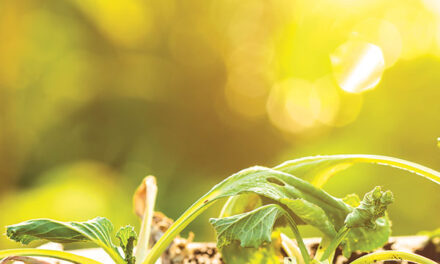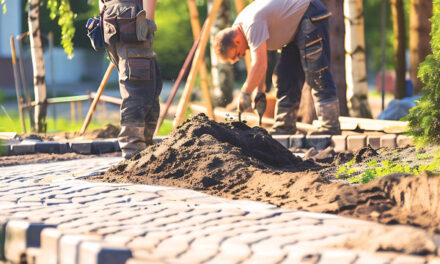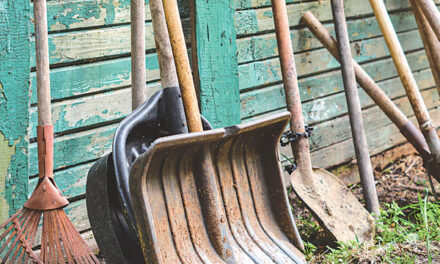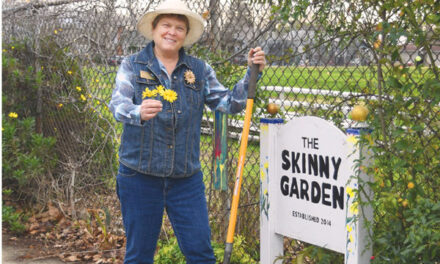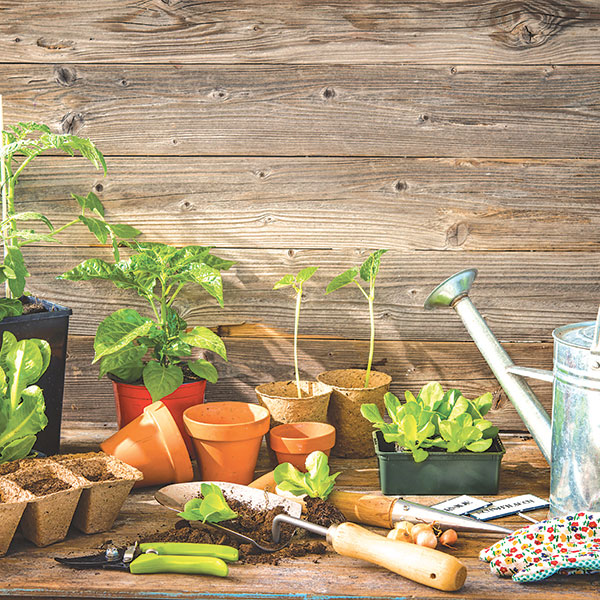
My in-ground growing space is limited because of a swimming pool and surrounding hardscape. What is not spreading roots in the earth has migrated to pots. I’ve had success growing flowering annuals, citrus (limes, Mandarins and oranges), potatoes, lettuce and other greens, garlic, onions, herbs, strawberries and blueberries in containers. I just planted ginger in pots.
Flowering annuals can be swapped out to complement the season. Large pots will accommodate three or four different annuals for spectacular displays.
Tending pots during Sacramento summers requires larger sizes, a minimum of 16 inches in diameter and just as deep to maintain moisture, keep roots from cooking and head off multiple daily watering.
Larger containers are heavier, especially when filled with soil. Terra cotta, glazed ceramic, wood and concrete containers can be extremely heavy. Permanent locations or positioned atop casters to roll around is recommended. Lighter options include plastic, fiberglass and polystyrene foam containers. Metal may get too hot. Another option is grow bags, made from fabric, light and reusable.
Edibles require a minimum of six hours daily sunlight, which can be a challenge in urban areas. Late afternoon shade is always a plus in summer. Pot feet, casters or pieces of wood will lift containers off sizzling surfaces and allow air circulation.
Unlike citrus, other fruit trees can be a challenge to grow in containers. They perform better in the ground. If a container is the only option, choose trees with a dwarf rootstock and a credential for surviving in small spaces. Use a half wine barrel.
Other than rescuing gardeners from limited space, pots can solve issues of poor soil, diseased soil and pest problems. Gardeners unlucky enough to have root-knot nematodes in beds can create safe havens with bagged soil in containers.
Nematodes are microscopic, parasitic roundworms that penetrate roots and cause plants to decline. Farmers have chemical options to combat root-knot nematodes. Those options are not available to home gardeners. A lab test can determine if your soil is infested. A visual inspection of a dying plant’s roots may show galls or knots. If your veggies have suffered in recent years, you may have nematodes.
Like azaleas, camellias, hydrangeas and rhododendrons, the aforementioned blueberries produce best in acidic soil. Add elemental sulfur to your potting soil to lower the pH. Plant two or three blueberry varieties in close proximity for better yield and add sphagnum moss to the soil mixture to help retain moisture on summer days. Movable containers will allow you to relocate pots to avoid late afternoon sun. Your blueberries will love a caring touch.
Filling containers with yard soil is not an option. All sorts of problems can arise. Use bagged potting mixes from nurseries, which eliminate soil diseases and pest problems. Potting mixes allow good drainage and do not compact like the heavy, rocky dirt you would dig from the yard.
Trellises work well for beans, cherry tomatoes and smaller melons in tight spaces. Be sure to place containers so larger plants do not shade out smaller ones.
Watering containers can be time consuming. Most require daily water (twice daily during hot months). Self-watering pots and drip irrigation is your BGF (best garden friend). Mulching the soil surface with bark chips, straw or shredded leaves helps keep roots happy. Happy roots mean happy gardener.
Dan Vierria is a University of California Cooperative Extension Master Gardener for Sacramento County. He can be reached at masterg29@gmail.com. For answers to gardening questions, contact UCCE Master Gardeners at (916) 876-5338, email mgsacramento@ucanr.edu or visit sacmg.ucanr.edu. Follow us on Facebook, Twitter and Instagram: @insidesacramento.






